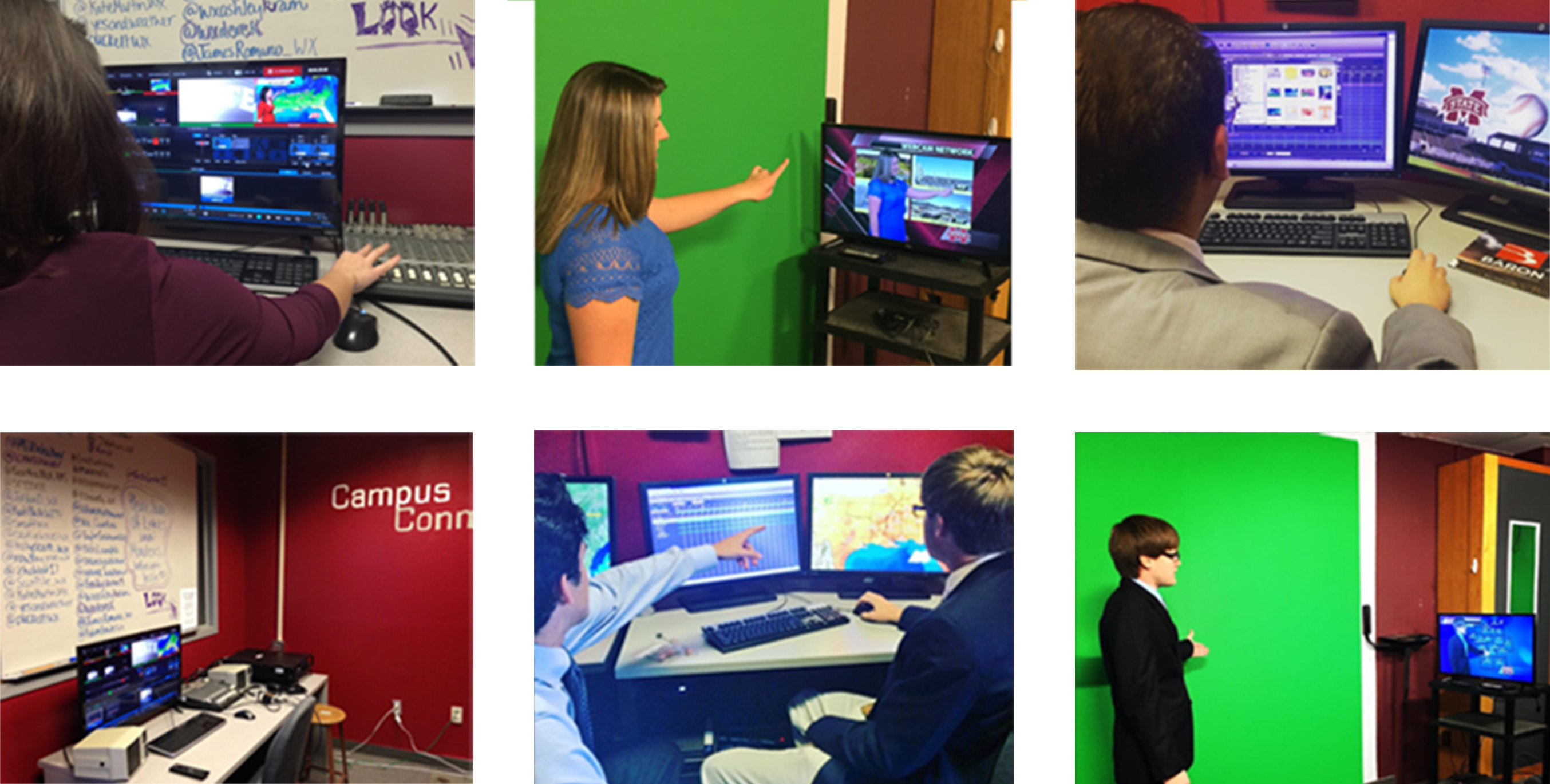Geology
The Department of Geosciences has a fully equipped geochemistry lab including: refrigerator/freezer and a -86C ultralow freezer; reverse osmosis and nanopure water system; chemical hood and laminar flow hood with UV light capabilities; ultrasonicators; alkalinity titration setup; oakton pH meter; hanna instrument benchtop pH/EC meter; ORP, pH, and salinity probes. Faculty and students also have access to the petrographic facilities including: petrographic and stereo microscopes with cameras; cathodoluminescence microscope; capacity to cut, polish, and create thin sections; new wave micromilling system allowing to collect rock samples with 100 micron resolution.
Additional equipment available includes: gas chromatograph mass spectrometer; double beam spectrophotometers; thermal desorption system; microplate reader; centrifuges; microsensors; saws and lapidary facilities; field instrumentation for determination of in situ water quantity and quality.
X-ray diffractometers; scanning electron microscopes equipped with secondary electron, backscattered electron, and cathodoluminescence detectors; as well as electron dispersive and wavelength dispersive X-ray spectrometers; transmission electron microscope; confocal laser scanning microscope are available at The Institute for Imaging & Analytical Technologies (I²AT) (https://www.i2at.msstate.edu/).
Quartz Crystal Microbalance with Dissipation (QCM-D) is available at the University of Mississippi (https://sites.google.com/go.olemiss.edu/um-qcm-d/home). The instrument (the Q-Sense analyzer from NanoScience) was purchased through NSF MRI Grant. Please contact Professor Rinat Gabitov for details.

Geospatial Sciences
Remote Sensing (RS) and Geographic Information Systems (GIS) are individually and collectively important aspects of geospatially-orientated education and research. The geospatial program at the Department of Geosciences at MSU is one of the strongest programs in the nation and houses the USGS/NGA Geospatial Center of Academic Excellence. Students not only develop basic geospatial skills, but also learn object-oriented programming and relational-database/geo-database skills. They also learn both basic and advanced functionalities in Arc GIS, Erdas Imagine, ENVI, and SeaDAS. This set of skills is in high demand in workforce and for students who choose to pursue advanced degrees.
The Department of Geosciences at Mississippi State University has a state of the art RS and GIS laboratory. This laboratory is outfitted with 30 workstations, with additional workstations in graduate student offices. These workstations have all major RS, GIS, and statistical software packages. Students and researchers also have access to two departmental servers for geospatial data storage and handling that also houses "thin-client" versions of GIS and RS software. Additionally, the Geosystems Research Institute (GRI) has high-performance parallel computers for complex image processing.

The Remote Sensing Laboratory has a range of equipment to carry out field data collection, and laboratory analyses of water, vegetation and soil samples. It is equipped with two Eco-triplets (Wetlabs Inc., OR) for in situ backscattering measurements and an additional Eco-triplet for in situ chlorophyll a, phycoerythrin and phycocyanin pigment concentration measurement. It is also equipped with a GER 1500 spectro-radiometer (Spectravista Inc., NY) for the in situ measurement of remote sensing reflectance and a Hanna multiparameter probe (HI9828, Hanna Instruments, RI) for the in situ measurements of temperature, salinity, pH and dissolved oxygen. It houses a Lambda 850 spectrophotometer (PerkinElmer Inc., MA), which is used for absorption measurements and Horiba Jovin Yvon Fluoromax-4 spectro-fluorometer (Horiba Scientific, NJ) for fluorescence measurements. The laboratory has an automated assay system for automated quantitation of algal toxins. It has incubators for bacterial cultures and a Mass Spectrometer (PerkinElmer Inc., MA) for heavy metal analysis. The wet lab has four filtration apparatuses, which are used for filtration of the water samples. The lab is also outfitted with sonicators, centrifuges, ultra-low temperature freezers, and analytical balances. These facilities provide an excellent opportunity for quality education and research.

Meteorology
The MSU Geosciences meteorology program focuses on real-world applications in both professional and broadcast meteorology. As such, many of our courses are accompanied by laboratory sections that utilize modern equipment and resources to best prepare our students for jobs in the atmospheric sciences. Both undergraduate and graduate students have access to these resources, which can be utilized for research and/or professional development over a range of topics and disciplines. Some of these topics and a list of associated resources include:
Numerical weather prediction and computational methods
- A number of multi-core computational platforms (single-node and clusters up to 32 core) running various versions of Linux for serial and parallel applications
- 2D/3D scientific visualization software packages running under Windows and Linux environments (i.e., GrADS, ParaView, IDV, Vapor)
- Various builds of the Weather Research and Forecasting (WRF) model, including Hurricane WRF and WRF-Hydro
- Programming languages (i.e., R, Python, etc.) with a number of external packages specific to meteorological applications on both Windows and Linux environments
Measurements and observations
- Multiple sets of high-end sensors (Young and Campbell scientific) for measuring atmospheric temperature, humidity, wind speed/direction, and solar/terrestrial radiation
- Full Davis weather station providing real-time observations to MSU Geosciences web page
- Access to a global archive of weather and climate data and analysis products (including radar and satellite) via the Office of the Mississippi State Climatologist
Broadcast meteorology
The MSU Climate Lab Studio serves as the hub of the Broadcast Meteorology Program. It is comprised of a large studio featuring two green-screen chroma-key walls, two cameras, four monitors, and IFB capability. The studio is powered by a control room that features studio controls, a TriCaster 410 production system, and Baron Omni and VIPIR weather graphics. The products produced in the studio include Practicum in Broadcast Meteorology I–IV lab exercises and our CampusConnect Forecast.

Our Climate Lab also houses the Temperature Reconnaissance Aboard Multiple Platforms (TRAMP) team, which provides our students additional hands-on opportunities while supplying the community, local civil defense offices, and the National Weather Service with local field observations during significant weather events.
